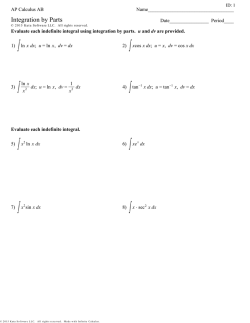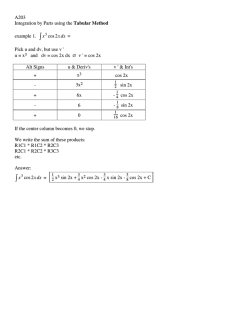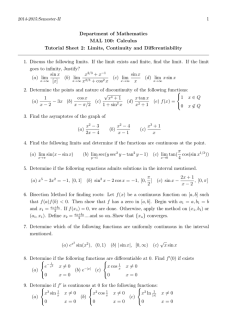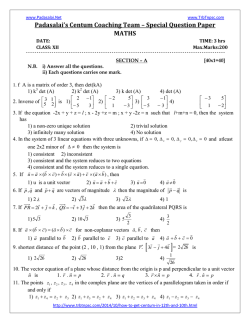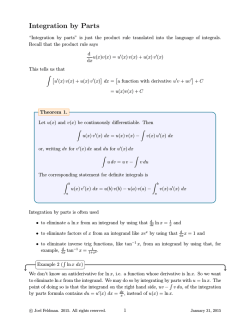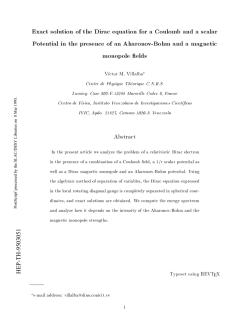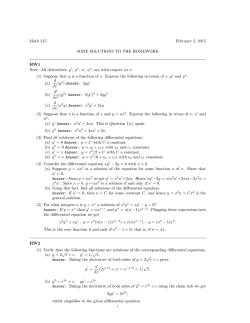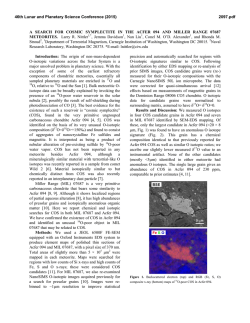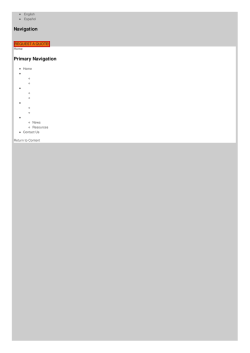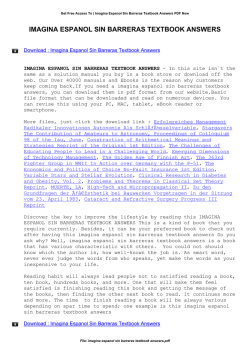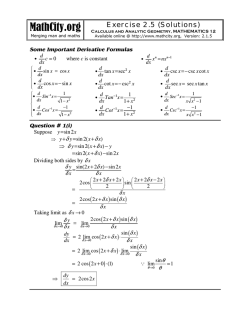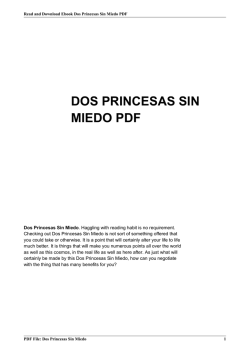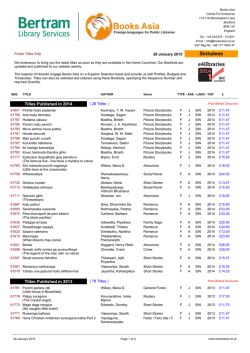
f(x, y) = 9 sin x siny ⇒ fx = 9 cosx siny, fy = 9 sin x cosy - WebAssign
f (x, y) = 9 sin x sin y ⇒ fx = 9 cos x sin y, fy = 9 sin x cos y, fxx = −9 sin x sin y, fxy = 9 cos x cos y, fyy = −9 sin x sin y. Here we have −π < x < π and −π < y < π, so fx = 0 implies cos x = 0 or sin y = 0. If cos x = 0 then x = − π2 or π2 , and if sin y = 0 then y = 0. Substituting x = ± π2 into fy = 0 gives cos y = 0 ⇒ y = − π2 or π2 , and substituting y = 0 into fy = 0 gives sin x = 0 ⇒ x = 0. Thus the critical points are − π2 , ± π2 , π2 , ± π2 , and (0, 0). D(0, 0) = −81 < 0 so (0, 0) is a saddle point. D − π2 , ± π2 = D π , ± π2 2 fxx − π2 , − π2 = fxx fxx − π2 , π2 = fxx π π , 2 2 π , − π2 2 = 81 > 0 and = −9 < 0 while = 9 > 0, so f − π2 , − π2 = f maxima and f − π2 , π2 = f π , − π2 2 π π , 2 2 = 9 are local = −9 are local minima. 8 6 4 2 0 –2 –4 –6 –8 –3 –2 –1 y 0 1 2 3 3 2 1 0 –1 x –2 –3
© Copyright 2025
